What Happens after the bin?
Once trash and recyclables are thrown into their respective bins and then hauled away at the curb or taken to a transfer station, it can be easy to think that our collective household waste is “out of sight, out of mind.”
But our trash has to go somewhere and once it leaves homes, schools, and businesses it undertakes quite a journey to different final destinations: stored permanently in a landfill, burned for energy, or recycled into reusable materials (compost, metals, papers, etc.).
SECOG recently hosted a regional Solid Waste Facility Bus Tour to give local leaders a closer look at the lifecycle of everyday waste and recycling. Mayors, first selectmen, public works directors, and other municipal staff toured WIN Waste’s Waste-To-Energy facility in Lisbon, Casella’s Materials Recycling Facility (MRF) in Windham, and Ledyard’s Transfer Station Food Waste Collection to learn more about how our region is working to manage waste in a more economically and environmentally sustainable way.
WIN Waste-to-Energy
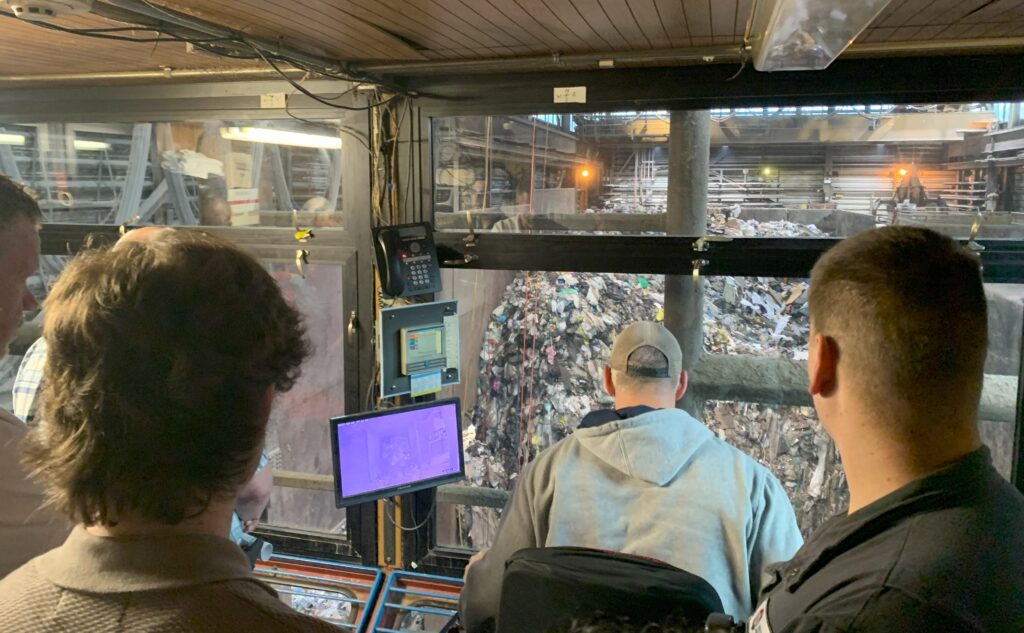
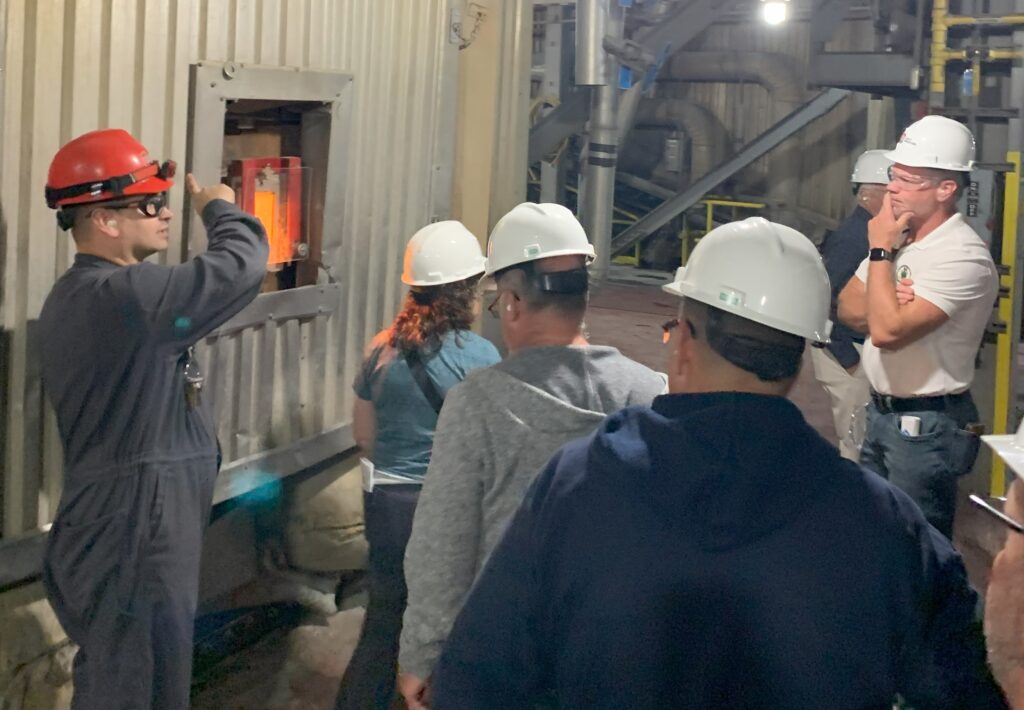
At the waste-to-energy facility, trash is first sorted by the operator of a giant claw into smaller piles by their wet-to-dry material ratios, which determines how they are burned. Items that cannot be burned can also be identified and removed during this process.
These piles are then burned via an efficient combustion system that uses Continuing Emission Monitoring that samples the flue to ensure compliance with the facility’s air quality permits. Data is summarized every minute, hour, and 24 hours. The facility mitigates several environmental concerns: nitrogen oxides, which produces smog, are reduced by injecting urea into the furnace; mercy emissions are absorbed through the use of activated carbon; acid gasses are removed by injecting lime slurry into the flue gas; and a fabric filter removes particulate matter from the flue gas.
The WIN Waste facility processes 184,000 tons of refuse each year, which is the smallest amount among the state’s 4 waste-to-energy facilities.
Casella Materials Recovery Facility
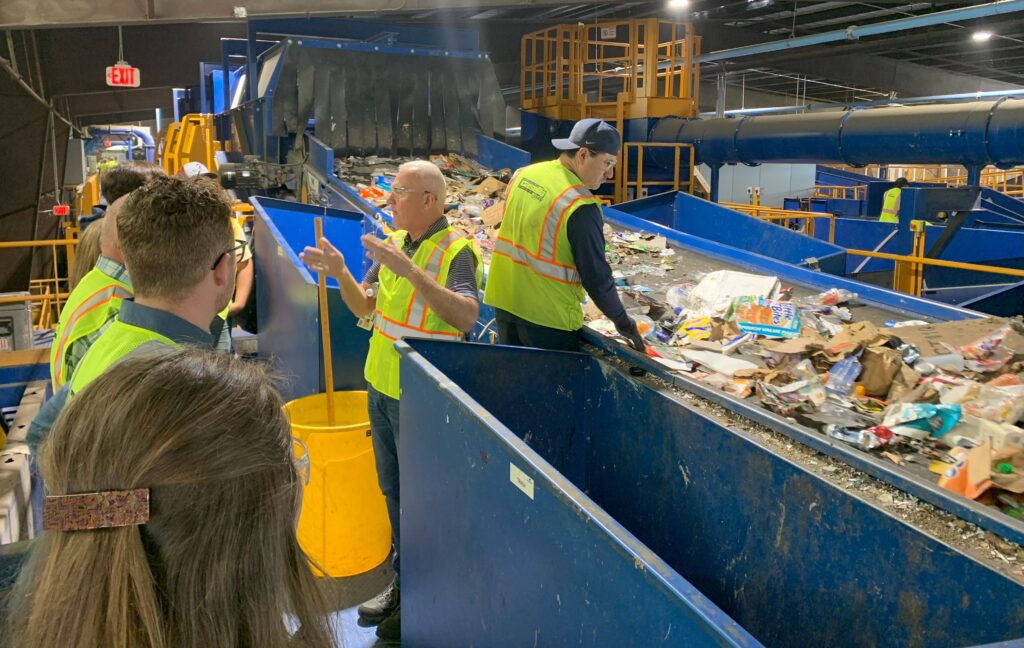
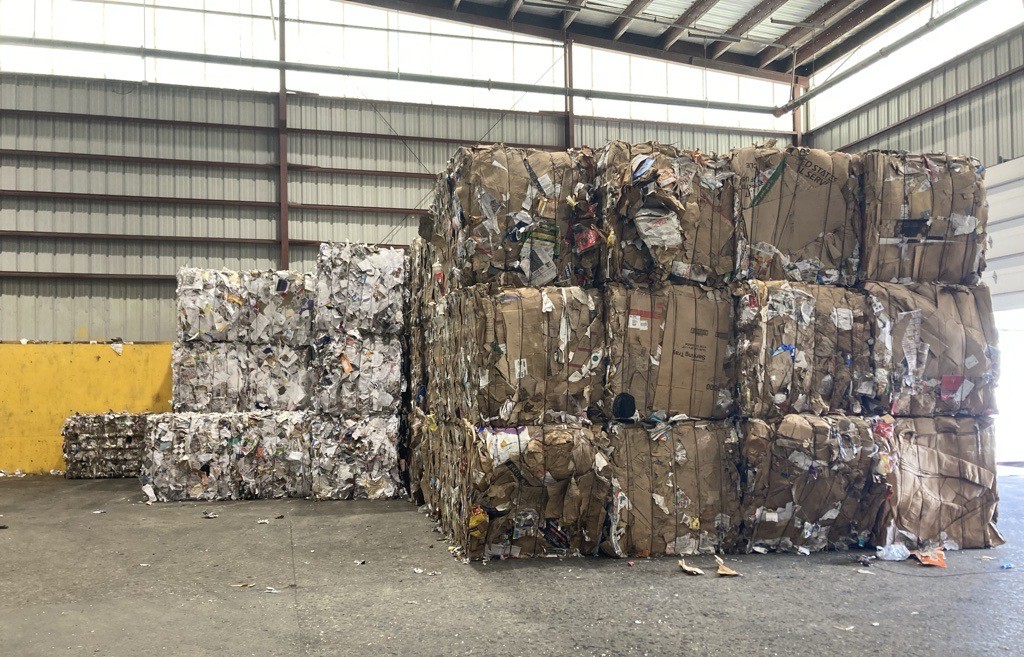
Casella recently renovated their Willimantic-based MRF with new technology for more effective and efficient sorting and processing to recover recyclables that have been discarded in the trash waste stream. Material inputs are processed both mechanically by machines and monitored manually by employees for quality control. Once processed, material is sorted into bales that will be delivered to customers that reuse these products in “end markets.”
A challenge facing facilities and the buyers of these end products is the amount of residue on the material. The residue rate of incoming recyclables is typically between 15%-20%. By the time it is sorted through this system, however, the number is drastically reduced to 1%, resulting in a much cleaner and more usable product for those who purchase these materials. The Casella MRF has the capacity to process 160,000 tons of single-stream recycling every year.
Ledyard Transfer Station Organics Collection
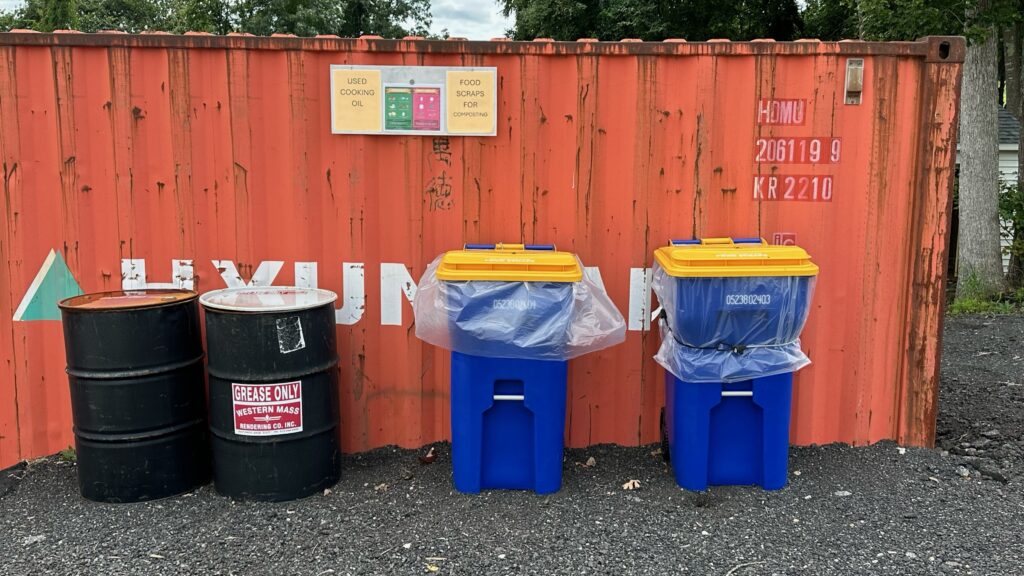
CT DEEP estimates that food scraps make up around 22% of the solid waste stream. Rich in moisture content, this material is heavy. Its weight puts heavier demands on trucks used to haul it, requiring heavier-duty vehicles and more fuel, increasing transportation cost factors in its disposal. In response to this reality and to the efforts of advocates, some municipalities have started implementing organics diversion programs.
Ledyard implemented a program in 2024 in which residents can bring food scraps to the transfer station for free. Collected in designated bins, the food scraps are then picked up by a private hauler that specializes in organics and taken to an appropriate processing facility. Material input for this program also comes from placing collection bins at the Ledyard Farmers Market.
Next Steps
The State of Connecticut has provided resources to support organic waste diversion through its solid waste Materials Management Infrastructure (MMI) and Sustainable Materials Management (SMM) grant programs.
SECOG, in partnership with the Town of Windham, was recently awarded funds from the MMI grant to purchase and install an in-vessel composter at the Town’s transfer station as well as implement a food scrap collection program at the public schools. SECOG looks forward to continuing to support our member towns with their efforts to reduce and divert waste.